-

新人教版高中英语选修2Unit 3 Reading for writing教学设计
The theme of this part is to write an article about healthy diet. Through reading and writing activities, students can accumulate knowledge about healthy diet, deepen their understanding of the theme of healthy diet, and reflect on their own eating habits. This text describes the basic principles of healthy diet. The author uses data analysis, definition, comparison, examples and other methods. It also provides a demonstration of the use of conjunctions, which provides important information reference for students to complete the next collaborative task, writing skills, vivid language materials and expressions.1. Teach Ss to learn and skillfully use the new words learned from the text.2. Develop students’ ability to understand, extract and summarize information.3. Guide students to understand the theme of healthy diet and reflect on their own eating habits.4. To guide students to analyze and understand the reading discourse from the aspects of theme content, writing structure, language expression, etc., 5. Enable Ss to write in combination with relevant topics and opinions, and to talk about their eating habits.1. Guide students to analyze and understand the reading discourse from the aspects of theme content, writing structure, language expression, etc.2. Enable them to write in combination with relevant topics and opinions, and to talk about their eating habits.3. Guide the students to use the cohesive words correctly, strengthen the textual cohesion, and make the expression fluent and the thinking clear.Step1: Warming upbrainstorm some healthy eating habits.1.Eat slowly.2.Don’t eat too much fat or sugar.3.Eat healthy food.4.Have a balanced diet.Step2: Read the passage and then sum up the main idea of each paragraph.

新人教版高中英语选修2Unit 2 Reading for writing教学设计
The theme of this section is to express people's views on studying abroad. With the continuous development of Chinese economic construction, especially the general improvement of people's living standards, the number of Chinese students studying abroad at their own expense is on the rise. Many students and parents turn their attention to the world and regard studying abroad as an effective way to improve their quality, broaden their horizons and master the world's advanced scientific knowledge, which is very important for the fever of going abroad. Studying abroad is also an important decision made by a family for their children. Therefore, it is of great social significance to discuss this issue. The theme of this section is the column discussion in the newspaper: the advantages and disadvantages of studying abroad. The discourse is about two parents' contribution letters on this issue. They respectively express their own positions. One thinks that the disadvantages outweigh the advantages, and the other thinks that the advantages outweigh the disadvantages. The two parents' arguments are well founded and logical. It is worth noting that the two authors do not express their views on studying abroad from an individual point of view, but from a national or even global point of view. These two articles have the characteristics of both letters and argumentative essays1.Guide the students to read these two articles, and understand the author's point of view and argument ideas2.Help the students to summarize the structure and writing methods of argumentative writing, and guides students to correctly understand the advantages and disadvantages of studying abroad3.Cultivate students' ability to analyze problems objectively, comprehensively and deeply

新人教版高中英语选修2Unit 2 Using langauge-Listening教学设计
? B: Absolutely! Getting involved with Chinese cultural activities there definitely helped a lot. I got to practice my Chinese on a daily basis, and I could learn how native Chinese speakers spoke.? A: What do you feel is your biggest achievement?? B: Learning Chinese characters! I have learnt about 1,500 so far. When I first started, I didn't think it was even going to be possible to learn so many, but now I find that I can read signs, menus, and even some easy newspaper articles.? A: What are you most keen on?? B: I've really become keen on learning more about the Chinese culture, in particular Chinese calligraphy. As I have learnt Chinese characters, I have developed a great appreciation for their meaning. I want to explore Chinese characters by learning how to write them in a more beautiful way. ? A: Finally, what do you want to say to anyone interested in learning Chinese?? I have really become keen on learning more about the Chinese culture, in particular Chinese Calligraphy. As I have learnt Chinese character, I have developed a great appreciation for their meaning. I want to explore Chinese characters by learning how to write them in a more beautiful way.? A: Finally, what do you want to say to anyone interested in learning Chinese?? B: I'd say, give it a shot! While some aspects may be difficult, it is quite rewarding and you will be happy that you tried.? A: Thanks for your time. ? B:You're welcome.

新人教版高中英语选修2Unit 3 Using langauge-Listening教学设计
1. How is Hunan cuisine somewhat different from Sichuan cuisine?The heat in Sichuan cuisine comes from chilies and Sichuan peppercorns. Human cuisine is often hotter and the heat comes from just chilies.2.What are the reasons why Hunan people like spicy food?Because they are a bold people. But many Chinese people think that hot food helps them overcome the effects of rainy or wet weather.3.Why do so many people love steamed fish head covered with chilies?People love it because the meat is quite tender and there are very few small bones.4.Why does Tingting recommend bridge tofu instead of dry pot duck with golden buns?Because bridge tofu has a lighter taste.5 .Why is red braised pork the most famous dish?Because Chairman Mao was from Hunan, and this was his favorite food.Step 5: Instruct students to make a short presentation to the class about your choice. Use the example and useful phrases below to help them.? In groups of three, discuss what types of restaurant you would like to take a foreign visitor to, and why. Then take turns role-playing taking your foreign guest to the restaurant you have chosen. One of you should act as the foreign guest, one as the Chinese host, and one as the waiter or waitress. You may start like this:? EXAMPLE? A: I really love spicy food, so what dish would you recommend?? B: I suggest Mapo tofu.? A: Really ? what's that?

新人教版高中英语选修2Unit 4 Learning about Language教学设计
This section guides students to pay attention to the typical context of vocabulary use, helps students accumulate vocabulary around the key vocabulary of this unit, and uses the learned words and word chunks in different contexts to deeply understand their meaning and usage, so as to achieve the purpose of review and consolidation.The teaching design activities aim to guide students to pay attention to the typical context in which the target vocabulary is used, as well as the common vocabulary used in collocation, so that students can complete the sentence with correct words. In terms of vocabulary learning strategies, this unit focuses on cultivating students' ability to pay attention to collocation of words and to use word blocks to express meaning.For vocabulary learning, it is not enough just to know the meaning of a single word, but the most important thing is to master the common collocations of words, namely word blocks.Teachers should timely guide students to summarize common vocabulary collocation, such as verb and noun collocation, verb and preposition collocation, preposition and noun collocation, and so on.1. Guide students to understand and consolidate the meaning and usage of the vocabulary in the context, 2. Guide the students to use the unit topic vocabulary in a richer context3. Let the students sort out and accumulate the accumulated vocabulary, establishes the semantic connection between the vocabulary,4. Enable students to understand and master the vocabulary more effectivelyGuiding the Ss to use unit topic words and the sentence patterns in a richer context.

新人教版高中英语选修2Unit 4 Reading for writing教学设计
假定你是英国的Jack,打算来中国旅行,请你给你的中国笔友李华写一封信,要点如下:1.你的旅行计划:北京→泰山→杭州;2.征求建议并询问他是否愿意充当你的导游。注意:1.词数80左右(开头和结尾已给出,不计入总词数);2.可以适当增加细节,以使行文连贯。参考词汇:故宫 the Forbidden City;泰山 Mount TaiDear Li Hua,I'm glad to tell you that 'm going to visit China.First,I am planning to visit Beijing,the capitalof China,where I am looking forward to enjoying the Great Wall,the Forbidden City and somebeautiful parks.Then I intend to go to visit Mount Tai in Shandong Province.I've heard that it is one ofthe most famous mountains in China and I can't wait to enjoy the amazing sunrise there.After that,I amalso going to Hangzhou.It is said that it is a beautiful modern city with breathtaking natural sights,among which the West Lake is a well- known tourist attraction.What do you think of my travel plan? Will you act as my guide? Hope to hear from you soon.

新人教版高中英语选修2Unit 4 Using langauge-Listening教学设计
The theme of the listening section is " talking about scenery and culture along a journey."The part is designed to further lead the students to understand Canadian natural geography and social environment, and integrated into the cultural contrast by mentioning the long train journey from Beijing to Moscow routes. On this basis, the part activates students related travel experience, lets the student serial dialogue, guides the student to explore further the pleasure and meaning of the long journey, and Chinese and foreign cultural comparison.The part also provides a framework for the continuation of the dialogue, which is designed to provide a framework for students to successfully complete their oral expressions, and to incorporate an important trading strategy to end the dialogue naturally.1. Help students to understand and master some common English idioms in the context, and experience the expression effect of English idioms.2. Guide the students to understand the identity of different people in the listening context, and finish the dialogue according to their own experience.3. Instruct the students to use appropriate language to express surprise and curiosity about space and place in the dialogue, and master the oral strategy of ending the dialogue naturally.1. Instruct students to grasp the key information and important details of the dialogue.2. Instruct students to conduct a similar talk on the relevant topic.

新人教版高中英语选修2Unit 5 Learning about Language教学设计
The purpose of this section of vocabulary exercises is to consolidate the key words in the first part of the reading text, let the students write the words according to the English definition, and focus on the detection of the meaning and spelling of the new words. The teaching design includes use English definition to explain words, which is conducive to improving students' interest in vocabulary learning, cultivating their sense of English language and thinking in English, and making students willing to use this method to better grasp the meaning of words, expand their vocabulary, and improve their ability of vocabulary application. Besides, the design offers more context including sentences and short passage for students to practice words flexibly.1. Guide students to understand and consolidate the meaning and usage of the vocabulary in the context, 2. Guide the students to use the unit topic vocabulary in a richer context3. Let the students sort out and accumulate the accumulated vocabulary, establishes the semantic connection between the vocabulary,4. Enable students to understand and master the vocabulary more effectivelyGuiding the Ss to use unit topic words and the sentence patterns in a richer context.Step1: Read the passage about chemical burns and fill in the blanks with the correct forms of the words in the box.

新人教版高中英语选修2Unit 5 Reading and thinking教学设计
The theme of this activity is to learn the first aid knowledge of burns. Burns is common in life, but there are some misunderstandings in manual treatment. This activity provides students with correct first aid methods, so as not to take them for granted in an emergency. This section guides students to analyze the causes of scald and help students avoid such things. From the perspective of text structure and collaborative features, the text is expository. Expository, with explanation as the main way of expression, transmits knowledge and information to readers by analyzing concepts and elaborating examples. This text arranges the information in logical order, clearly presents three parts of the content through the subtitle, accurately describes the causes, types, characteristics and first aid measures of burns, and some paragraphs use topic sentences to summarize the main idea, and the level is very clear.1. Guide students to understand the causes, types, characteristics and first aid methods of burns, through reading2. Enhance students’ ability to deal withburnss and their awareness of burns prevention3. Enable students to improve the ability to judge the types of texts accurately and to master the characteristics and writing techniques of expository texts.Guide students to understand the causes, types, characteristics and first aid methods of burns, through readingStep1: Lead in by discussing the related topic:1. What first-aid techniques do you know of ?CPR; mouth to mouth artificial respiration; the Heimlich Manoeuvre

新人教版高中英语选修2Unit 5 Using langauge-Listening教学设计
The theme of this section is to learn how to make emergency calls. Students should learn how to make emergency calls not only in China, but also in foreign countries in English, so that they can be prepared for future situations outside the home.The emergency telephone number is a vital hotline, which should be the most clear, rapid and effective communication with the acute operator.This section helps students to understand the emergency calls in some countries and the precautions for making emergency calls. Through the study of this section, students can accumulate common expressions and sentence patterns in this context. 1.Help students accumulate emergency telephone numbers in different countries and learn more about first aid2.Guide the students to understand the contents and instructions of the telephone, grasp the characteristics of the emergency telephone and the requirements of the emergency telephone.3.Guide students to understand the first aid instructions of the operators.4.Enable Ss to make simulated emergency calls with their partners in the language they have learned1. Instruct students to grasp the key information and important details of the dialogue.2. Instruct students to conduct a similar talk on the relevant topic.Step1:Look and discuss:Match the pictures below to the medical emergencies, and then discuss the questions in groups.
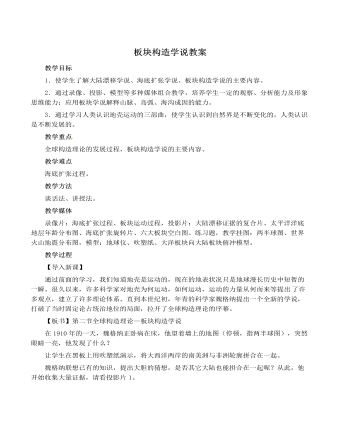
人教版高中地理选修1板块构造学说教案
【启发想象 】能否将刚才讲的内容用一个游泳动作形容一下?这好像蛙泳动作。我们大家一起做:熔岩冒出(双手合十向上)→推向两边(双手向两侧分开)→遇陆俯冲(双手往下)→重熔再生(双手相向合并向上)。【小结板书】二、海底扩张学说前面我们学习了两个假说,整理一下已知条件:事实证明大陆是在漂移的,如欧洲与美洲的距离在扩张,但是漂移的动力不足;海底是不断扩张的,有生长与消亡。能否在前人研究的基础上,提出更准确更合理的假设呢?一个新的理论诞生了,它是目前最盛行、最活跃的全球构造理论【板书】三、板块构造学说1.板块概念学生读书。【启发提问】板块“漂移”与大陆“漂移”的位置有何不同?学生回答。板块漂移是指岩石圈漂在软流层上,大陆漂移发生在地壳两层之间。【提问】板块是如何划分的?读图用半分钟记下六大板块的位置和名称(提示:按大洲和大洋名称记忆)。
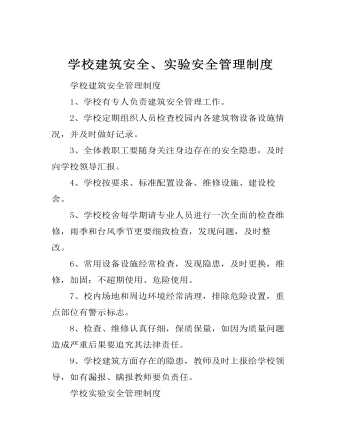
学校建筑安全、实验安全管理制度
2、学校定期组织人员检查校园内各建筑物设备设施情况,并及时做好记录。 3、全体教职工要随身关注身边存在的安全隐患,及时向学校领导汇报。 4、学校按要求、标准配置设备、维修设施、建设校舍。 5、学校校舍每学期请专业人员进行一次全面的检查维修,雨季和台风季节更要细致检查,发现问题,及时整改。
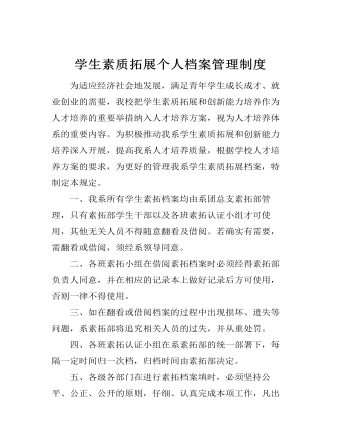
学生素质拓展个人档案管理制度
一、我系所有学生素拓档案均由系团总支素拓部管理,只有素拓部学生干部以及各班素拓认证小组才可使用,其他无关人员不得随意翻看及借阅。若确实有需要,需翻看或借阅,须经系领导同意。 二、各班素拓小组在借阅素拓档案时必须经得素拓部负责人同意,并在相应的记录本上做好记录后方可使用,否则一律不得使用。
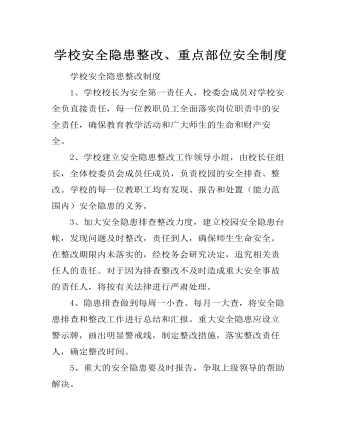
学校安全隐患整改、重点部位安全制度
2、学校建立安全隐患整改工作领导小组,由校长任组长,全体校委员会成员任成员,负责校园的安全排查、整改。学校的每一位教职工均有发现、报告和处置(能力范围内)安全隐患的义务。 3、加大安全隐患排查整改力度,建立校园安全隐患台帐,发现问题及时整改,责任到人,确保师生生命安全。在整改期限内未落实的,经校务会研究决定,追究相关责任人的责任。对于因为排查整改不及时造成重大安全事故的责任人,将按有关法律进行严肃处理。
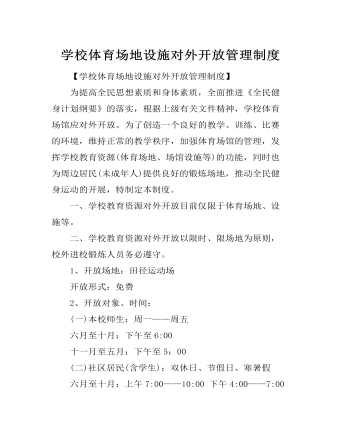
学校体育场地设施对外开放管理制度
一、学校教育资源对外开放目前仅限于体育场地、设施等。 二、学校教育资源对外开放以限时、限场地为原则,校外进校锻炼人员务必遵守。 1、开放场地:田径运动场 开放形式:免费 2、开放对象、时间: (一)本校师生:周一——周五 六月至十月:下午至6:00 十一月至五月:下午至5:00
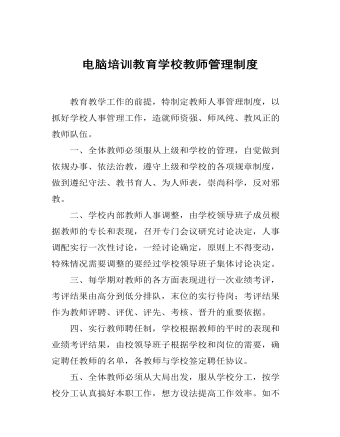
电脑培训教育学校教师管理制度
一、全体教师必须服从上级和学校的管理,自觉做到依规办事、依法治教,遵守上级和学校的各项规章制度,做到遵纪守法、教书育人、为人师表,崇尚科学,反对邪教。 二、学校内部教师人事调整,由学校领导班子成员根据教师的专长和表现,召开专门会议研究讨论决定,人事调配实行一次性讨论,一经讨论确定,原则上不得变动,特殊情况需要调整的要经过学校领导班子集体讨论决定。 三、每学期对教师的各方面表现进行一次业绩考评,考评结果由高分到低分排队,末位的实行待岗;考评结果作为教师评聘、评优、评先、考核、晋升的重要依据。 四、实行教师聘任制,学校根据教师的平时的表现和业绩考评结果,由校领导班子根据学校和岗位的需要,确定聘任教师的名单,各教师与学校签定聘任协议。
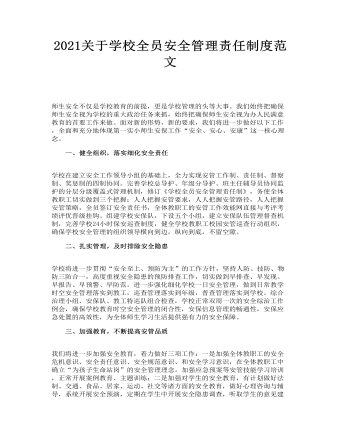
关于学校全员安全管理责任制度范文
一、健全组织,落实细化安全责任 学校在建立安全工作领导小组的基础上,全力实现安管工作制、责任制、督察制、奖惩制的四制协同。完善学校总导护、年级分导护、班主任辅导员协同监护的分层分级覆盖式管理机制,修订《学校全员安全管理责任制》,务使全体教职工切实做到三个把握:人人把握安管要求,人人把握安管路径,人人把握安管策略,全员签订安全责任书,全体教职工的安管工作效能网直接与考评考绩评优晋级挂钩。组建学校安保队,下设五个小组,建立安保队伍管理督查机制,完善学校24小时保安巡查制度,健全学校教职工校园安管巡查行动组织,确保学校安全管理的组织领导横向到边,纵向到底,不留空隙。 二、扎实管理,及时排除安全隐患 学校将进一步贯彻“安全至上、预防为主”的工作方针,坚持人防、技防、物防三防合一,高度重视安全隐患的预防排查工作,切实做到早排查、早发现、早报告、早预警、早防范。进一步强化细化学校一日安全管理,做到日常教学时空安全管理落实到教工,巡查管理落实到年级,普查管理落实到学校。综合治理小组、安保队、教工特巡队组合检查,学校正常双周一次的安全综治工作例会,确保学校教育时空安全管理的闭合性,安保信息管理的畅通性,安保应急处置的高效性,为全体师生学习生活提供强有力的安全保障。
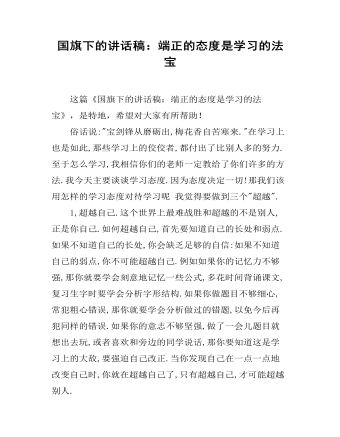
国旗下的讲话稿:端正的态度是学习的法宝
这篇《国旗下的讲话稿:端正的态度是学习的法宝》,是特地,希望对大家有所帮助!俗话说:"宝剑锋从磨砺出,梅花香自苦寒来."在学习上也是如此,那些学习上的佼佼者,都付出了比别人多的努力.至于怎么学习,我相信你们的老师一定教给了你们许多的方法.我今天主要谈谈学习态度.因为态度决定一切!那我们该用怎样的学习态度对待学习呢 我觉得要做到三个"超越".1,超越自己.这个世界上最难战胜和超越的不是别人,正是你自己.如何超越自己,首先要知道自己的长处和弱点.如果不知道自己的长处,你会缺乏足够的自信:如果不知道自己的弱点,你不可能超越自己.例如如果你的记忆力不够强,那你就要学会刻意地记忆一些公式,多花时间背诵课文,复习生字时要学会分析字形结构.如果你做题目不够细心,常犯粗心错误,那你就要学会分析做过的错题,以免今后再犯同样的错误.如果你的意志不够坚强,做了一会儿题目就想出去玩,或者喜欢和旁边的同学说话,那你要知道这是学习上的大敌,要强迫自己改正.当你发现自己在一点一点地改变自己时,你就在超越自己了,只有超越自己,才可能超越别人.
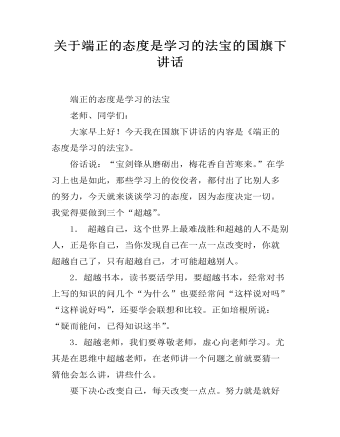
关于端正的态度是学习的法宝的国旗下讲话
端正的态度是学习的法宝老师、同学们:大家早上好!今天我在国旗下讲话的内容是《端正的态度是学习的法宝》。俗话说:“宝剑锋从磨砺出,梅花香自苦寒来。”在学习上也是如此,那些学习上的佼佼者,都付出了比别人多的努力,今天就来谈谈学习的态度,因为态度决定一切。我觉得要做到三个“超越”。1. 超越自己,这个世界上最难战胜和超越的人不是别人,正是你自己,当你发现自己在一点一点改变时,你就超越自己了,只有超越自己,才可能超越别人。
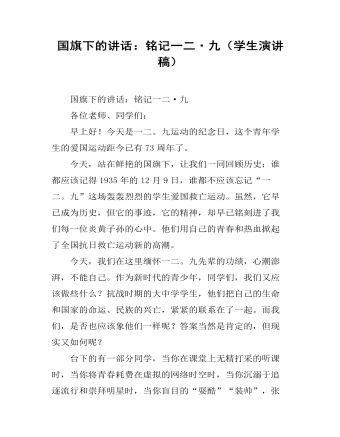
国旗下的讲话:铭记一二·九(学生演讲稿)
国旗下的讲话:铭记一二·九 各位老师、同学们:早上好!今天是一二。九运动的纪念日,这个青年学生的爱国运动距今已有73周年了。今天,站在鲜艳的国旗下,让我们一同回顾历史:谁都应该记得1935年的12月9日,谁都不应该忘记“一二。九”这场轰轰烈烈的学生爱国救亡运动。虽然,它早已成为历史,但它的事迹,它的精神,却早已铭刻进了我们每一位炎黄子孙的心中。他们用自己的青春和热血掀起了全国抗日救亡运动新的高潮。今天,我们在这里缅怀一二。九先辈的功绩,心潮澎湃,不能自己。作为新时代的青少年,同学们,我们又应该做些什么?抗战时期的大中学学生,他们把自己的生命和国家的命运、民族的兴亡,紧紧的联系在了一起。而我们,是否也应该象他们一样呢?答案当然是肯定的,但现实又如何呢?台下的有一部分同学,当你在课堂上无精打采的听课时,当你将青春耗费在虚拟的网络时空时,当你沉溺于追逐流行和崇拜明星时,当你盲目的“耍酷”“装帅”,张扬你所谓的“个性”时,不知你是否想到了作为当代青少年那肩头沉重的使命感?

